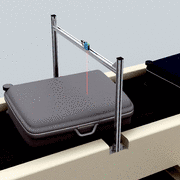Glossary
Background suppression
Photoelectric proximity sensors with background suppression operate on the basis of the geometric relation between the sending and receiving elements. The sensor is set to detect an object lying on the plane of the sensing range. Signals from objects located behind the set sensing range plane are suppressed. The result is unparalleled detection reliability and ambient light immunity for small, transparent, or reflective objects in the area close to the machine – even with varying brightness or color contrasts.
Related terms
- BGS
More information from SICK
